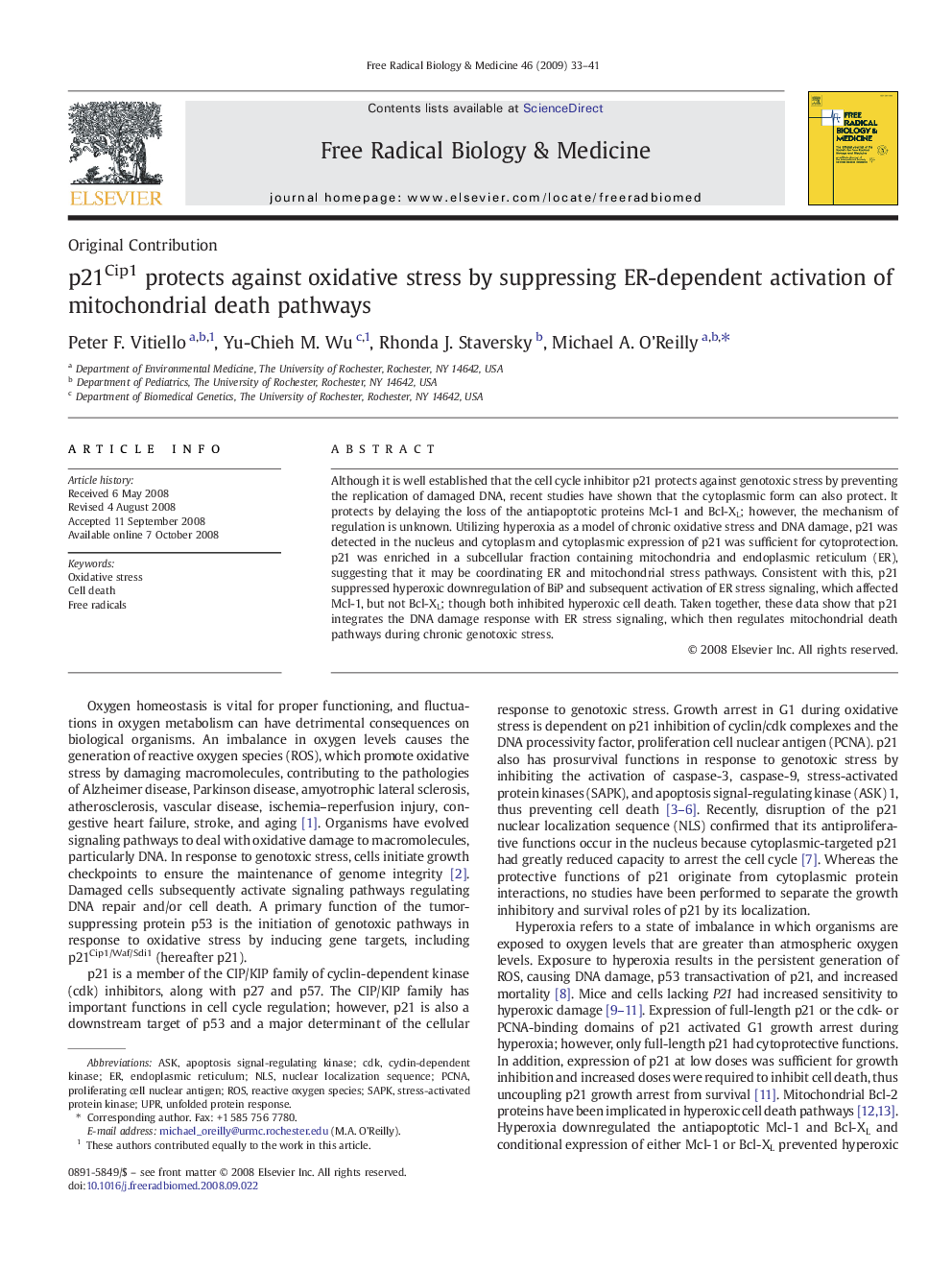| Article ID | Journal | Published Year | Pages | File Type |
|---|---|---|---|---|
| 1910362 | Free Radical Biology and Medicine | 2009 | 9 Pages |
Although it is well established that the cell cycle inhibitor p21 protects against genotoxic stress by preventing the replication of damaged DNA, recent studies have shown that the cytoplasmic form can also protect. It protects by delaying the loss of the antiapoptotic proteins Mcl-1 and Bcl-XL; however, the mechanism of regulation is unknown. Utilizing hyperoxia as a model of chronic oxidative stress and DNA damage, p21 was detected in the nucleus and cytoplasm and cytoplasmic expression of p21 was sufficient for cytoprotection. p21 was enriched in a subcellular fraction containing mitochondria and endoplasmic reticulum (ER), suggesting that it may be coordinating ER and mitochondrial stress pathways. Consistent with this, p21 suppressed hyperoxic downregulation of BiP and subsequent activation of ER stress signaling, which affected Mcl-1, but not Bcl-XL; though both inhibited hyperoxic cell death. Taken together, these data show that p21 integrates the DNA damage response with ER stress signaling, which then regulates mitochondrial death pathways during chronic genotoxic stress.
